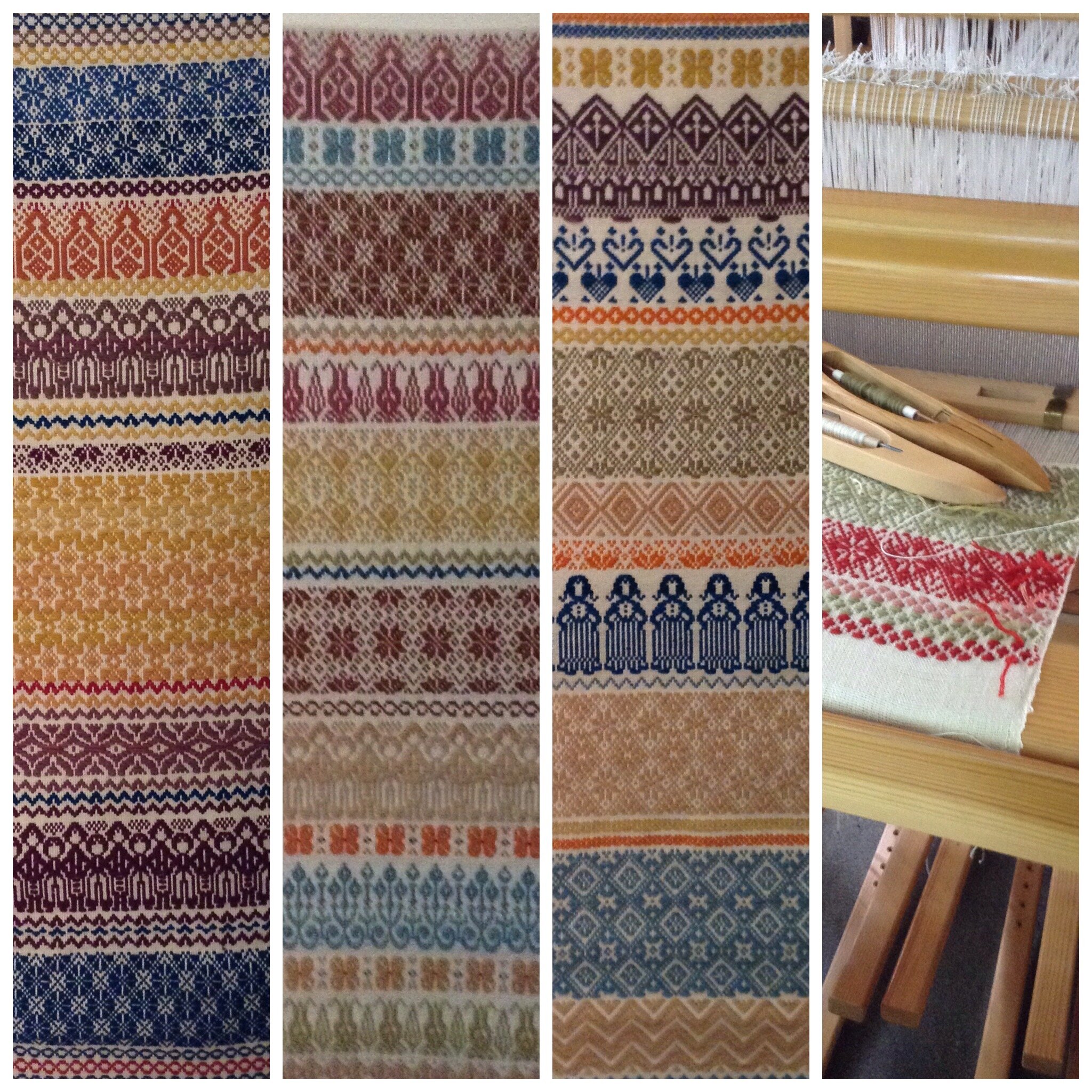Weaving Color Gradients

Another Color Study
In terms of overall area of weaving, I have probably produced more on my little Mirrix loom (the Saffron model) in the last few months than I have on my larger tapestry looms in, well, years. This one is my latest.
The inspiration for this little piece was a value gradation exercise from Josef Albers’ Interaction of Color.
The original exercise was an even 17 step grayscale gradation from black to white using colored paper (shades of gray obviously). But I was interested in using my scads* of naturally dyed tapestry yarn, so I wanted to do one in color, which is more difficult to pull off, for me anyway. So right away, you’re not going to get an even gradation simply due to the limitations of your yarn collection. And when you are using colored yarn, it can be challenging to sort out the lightness or darkness of a color from the hue. My simplification of the challenge was to use 12 rather than 17 different yarns using yellows for the lighter values and blues and purples for the darker values. And for the midrange, some vaguely brownish/tannish colors resulting from various over-dyeing experiments, in relatively light to mid tone values.
Even when you have had a lot of practice at this, it is still not easy to be sure which of two colors is darker if the values are close together. (In order to test my choices, I lined them up in what I hypothesized was the correct order and took a picture which I then converted to grayscale. Sadly, I must have inadvertently deleted the grayscale version from my camera roll or I would show it to you.
Unsurprisingly, since my yarn inventory is what it is, there was no way come up with a perfectly even gradation, or even a close proximation. I was happy to settle for this one, which is heavily skewed toward the dark side. (No, not that dark side.)
The other little trick I relied on, made possible by the configuration of the loom I was using, was to weave from the ends toward the middle. This ensured that I could keep the size of the stripes relatively consistent throughout the piece.
*scads is a technical term for measuring yarn quantities ;-)






